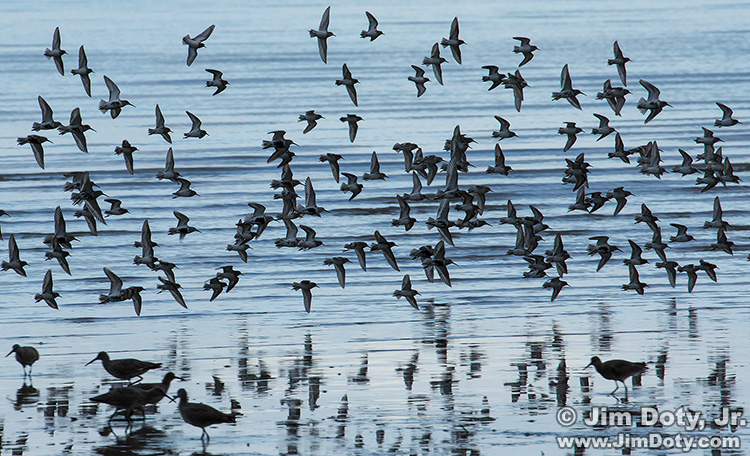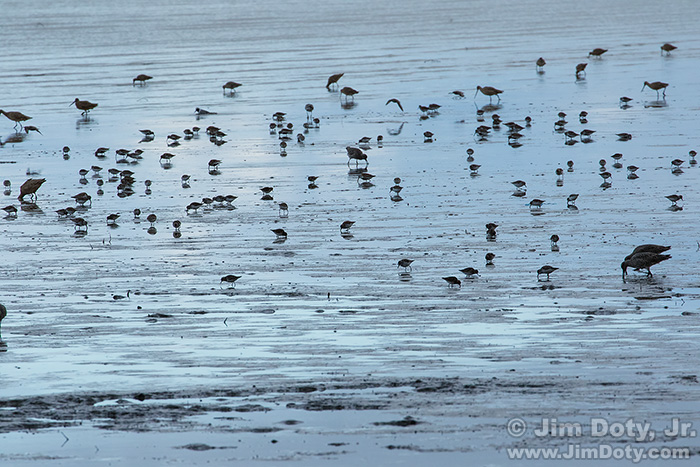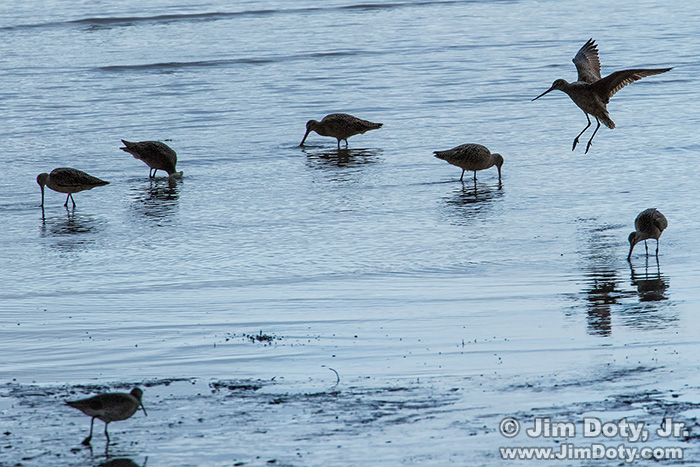Weather can have a lot to do with finding wildlife. After several days of rain and very few shorebirds to be seen, the rain stopped, the weather began to clear and the San Francisco Bay exploded with shorebirds.
When I am in Fremont California I spend my mornings at the Don Edwards San Francisco Bay National Wildlife Refuge. For several days in a row we had dark, gloomy clouds and plenty of rain. The wildlife photo opportunities were just about nil with very few shorebirds to be seen.
The rain left today and everything changed. There were thousands of shorebirds in all sizes and shapes flying in to feed in the shallow water. I drove to the end of Marshland Road near the Dumbarton Bridge. The sky was still gray and cloudy to the south which meant the water was gray also. Gray water is usually not good for photography.
But the clouds were beginning thin out to the north with some patches of blue sky here and there. By picking the right places along the shoreline I could photograph birds where the water was reflecting blue sky. Blue water makes for much better photography.
With a lot of birds in flight, I set the camera to predictive autofocus to track the motion of the birds. Canon cameras call this “AI SERVO” mode. In addition to creating photos of large numbers of birds in flight and large numbers of feeding birds, I would occasionally pick a single bird coming in to land among a group of shorebirds that were already feeding. The camera’s AI SERVO mode worked like a charm, giving me nice sharp photos. Properly used, modern autofocus technology is a wonderful thing.
Fast moving birds mean fast shutter speeds around 1/500 to 1/1000 second if you want to freeze them and their wings in flight. The diffused light meant I needed an ISO of 800 to get shutter speeds fast enough to freeze the birds.
If you are in the Bay Area and wild birds are your thing, the Don Edwards San Francisco Bay National Wildlife Refuge is a great place for photography. This is especially true after several days of rain when the birds come out and feed like crazy.
Photo Data
All photos: Canon 7D Mark II. Canon EF 70-300mm f4-5.6L lens at 300mm.
Top photo: f/11, 1/800 sec, ISO 800.
Middle photo: f/11, 1/800 sec, ISO 800.
Bottom photo: f/8, 1/1600, sec, ISO 800.
Links
The Best “How To†Nature Photography Books
If you are looking for a brief introduction to bird photography techniques, get the booklet Bird Photography: Pure and Simple by Arthur Morris. If you want to seriously pursue bird photography, there are two must read books, The Art of Bird Photography by Arthur Morris and How To Photograph Birds by Larry West.
Don Edwards San Francisco Bay National Wildlife Refuge – the official site



